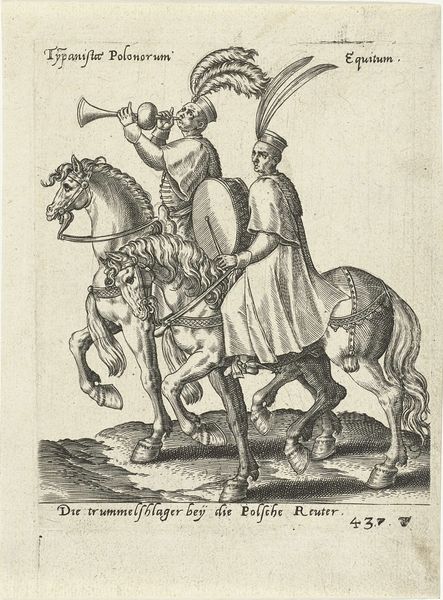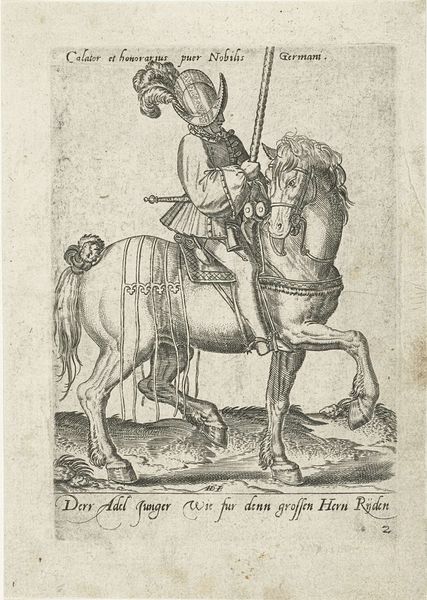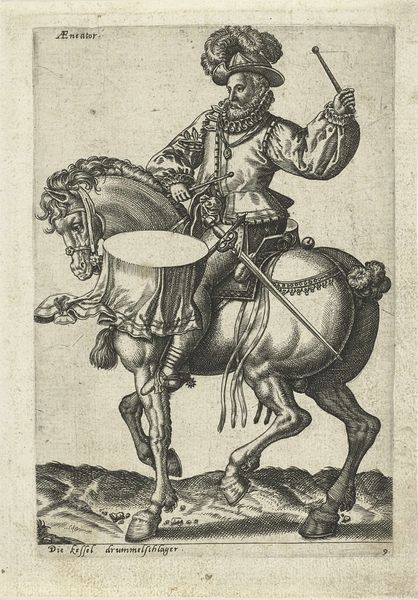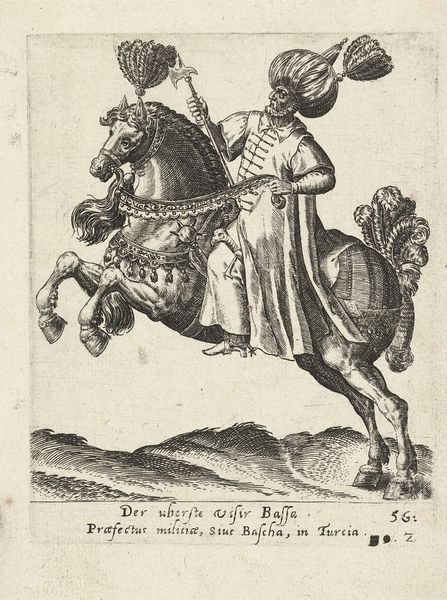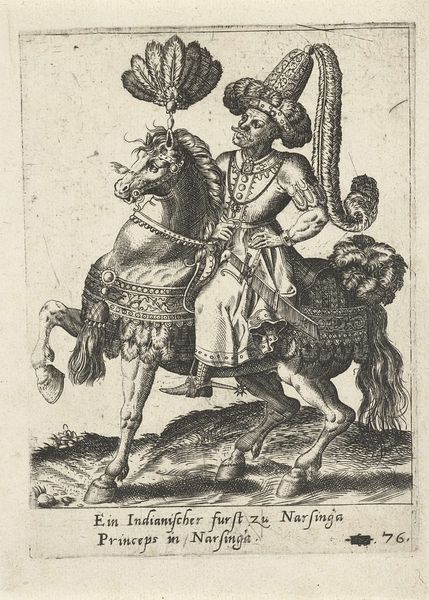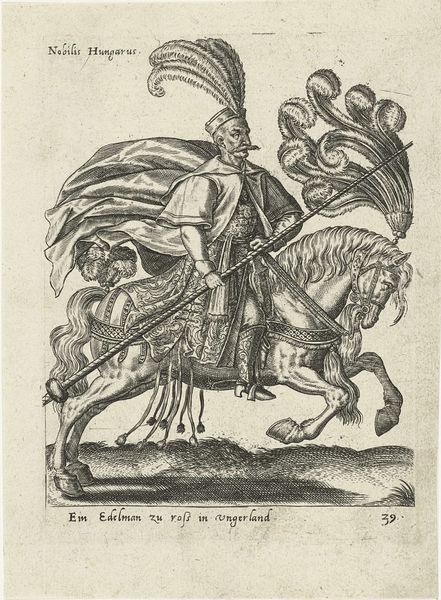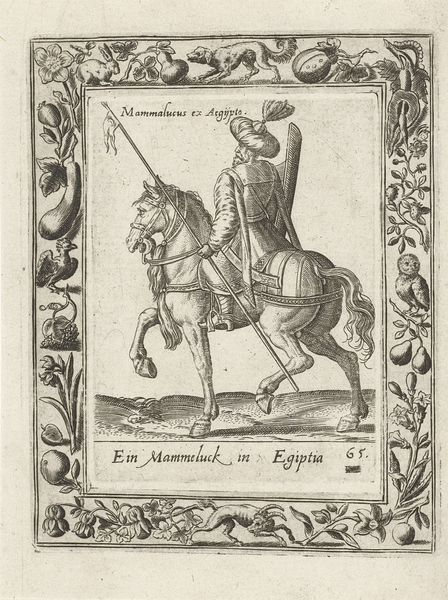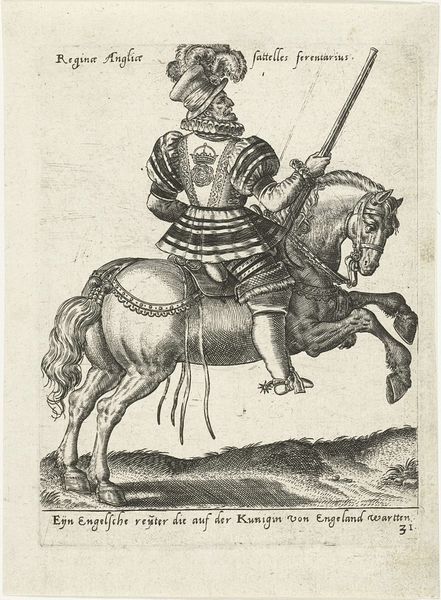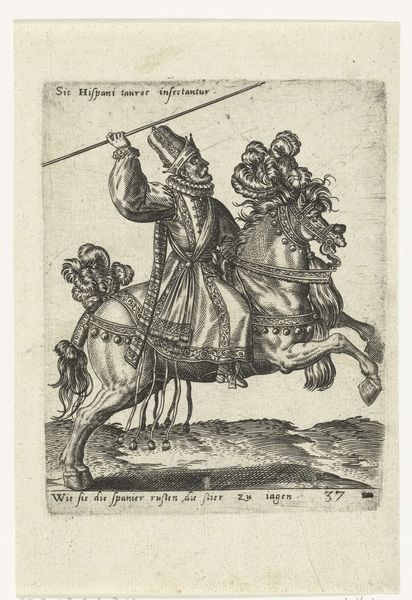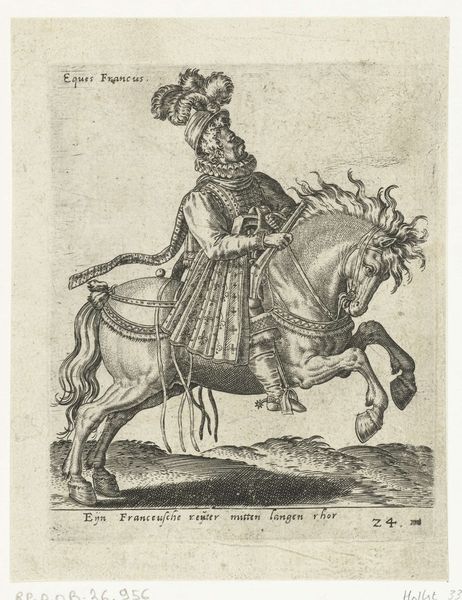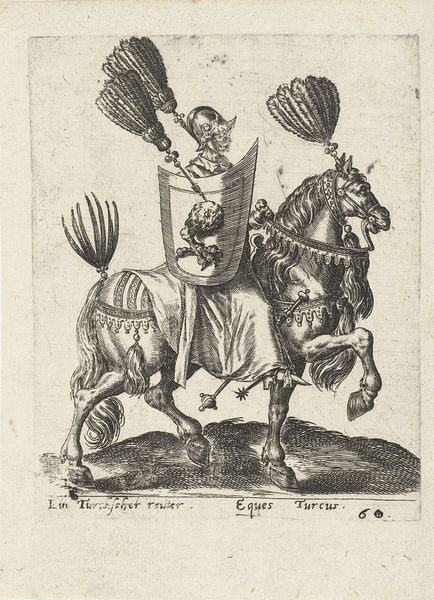
print, engraving
#
portrait
# print
#
old engraving style
#
landscape
#
mannerism
#
figuration
#
pen-ink sketch
#
line
#
history-painting
#
northern-renaissance
#
engraving
#
realism
Dimensions: height 143 mm, width 101 mm
Copyright: Rijks Museum: Open Domain
This engraving, "German Rider with Horn," was made in 1575 by Abraham de Bruyn. A lone rider, outfitted with a decorative hat and sturdy armor, sits astride his horse, raising a trumpet to his lips. Consider the trumpet itself. In antiquity, horns and trumpets were not merely musical instruments; they were symbols of power, status, and divine authority. Think of the trumpets heralding the arrival of emperors or announcing sacred rituals, and then of the Roman tuba. The blare of the trumpet roused armies to war, its call instilling courage or striking fear. Over time, this motif evolved. In Renaissance paintings, angels are frequently depicted blowing trumpets to announce divine judgment or the arrival of a new era. The echoes of the trumpet reverberate through our collective memory, stirring primal emotions associated with authority, war, and spiritual awakening. The instrument's presence is a powerful force, engaging viewers on a deep, subconscious level. This cyclical progression reveals how symbols resurface, evolve, and take on new meanings in different historical contexts.
Comments
No comments
Be the first to comment and join the conversation on the ultimate creative platform.
